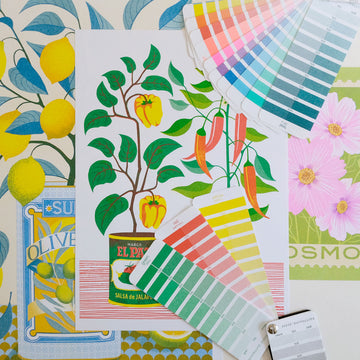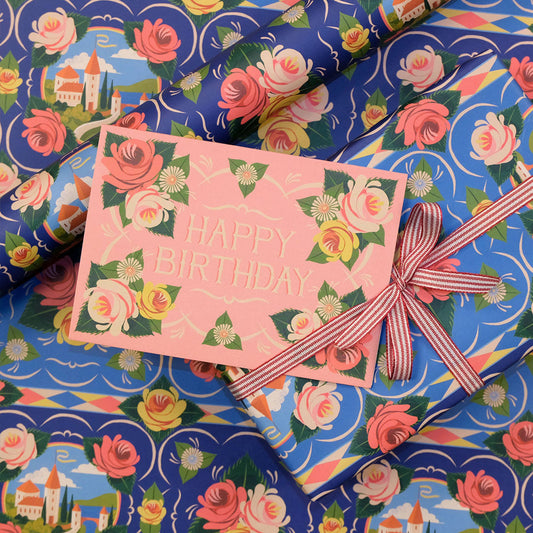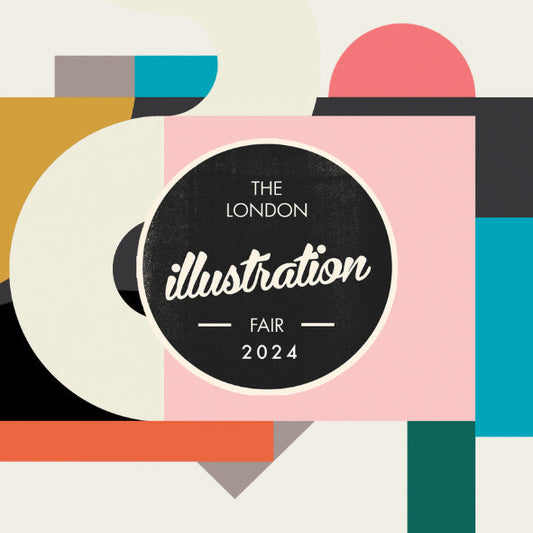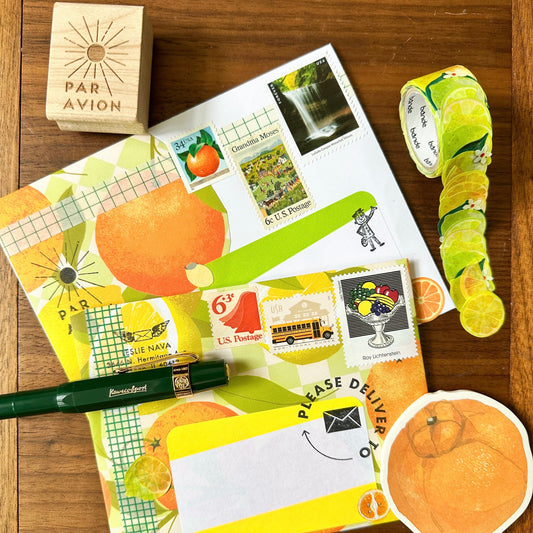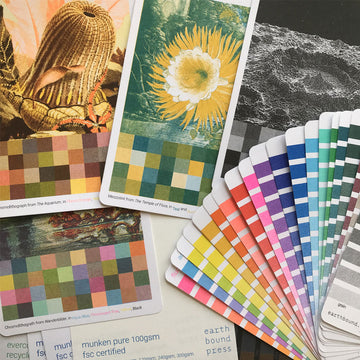

An introduction
I first heard about Earthbound Press while showing at the Hepworth print fair many years ago. Speaking to other exhibitors is a big reason I love taking part in print fairs, they have such a wealth of knowledge about all things print. I was looking for a new risograph studio to work so I was asking around and the vote was unanimous, Earthbound Press came highly recommended.
We’ve been working with Antonia of Earthbound Press for many years now and we couldn’t be happier with the results.
(If you're new to the riso printing process we recommend reading our previous post 'All about Risograph' for further details on how it works)
So Antonia, why do you think artists and designers are going bonkers for risograph printing right now?
I think the excitement around riso is a combination of its unique look, its versatility, and the organic feel of the process and the results. It’s also a more affordable form of colour printing, which helps give it mass appeal.
New studios always seem to be emerging, which is great! As more people discover riso and learn about the possibilities it offers, it looks like the market will continue to expand.
Everyone knows what a stencil is, so the basic principle of riso printing is universally familiar.
Lots of designers lean in to the stencil aesthetic, with blocks of bold colour. Others are also working with elaborate blends of superimposed stencils, which deliver a vast palette of tones from the combination of numerous inks. Prints done in this way can sometimes look more like watercolours.
The range of artistic styles that riso supports, and the fact that it’s relatively cheap and eco-friendly, gives it a broad democratic appeal, with plenty of creative flexibility.
With all these factors combined, there’s a lot to recommend riso as a first-choice option. And because it’ll never be as mass market as other more industrial high-volume forms of printing, even as riso grows it’ll still maintain a specialness and a somewhat ‘hand-made’ quality that you won’t ever get with digital printing or offset litho.
What got you got into risograph printing in the first place, where did it all begin for you?
I’ve long been interested in the unique potential of different kinds of print media, as well as being a fan of independent comics — many of which are riso, or have a similar look. (I’m thinking of the stencil-like look of earlier litho printing, which is such a big part of vintage comics). So that aesthetic has always appealed.
The first thing I riso printed myself was a small comic of my own creation, at Hurst Street Press in Oxford. It was a tiny book about a moth, printed in blue ink, with an orange card cover in an edition of one!
Later I interned at Hato Press, and ended up managing the print studio there for several years, before starting my own business with Earthbound.
What was the journey to starting up your own risograph studio?
There was a tonne of form-filling initially to get a loan for all the equipment. But once that was sorted out, the process of growing the press was the much more pleasant and inspiring work of finding new clients, learning from the challenges of their projects and showing them what riso can do!
What’s the best thing and the worst thing about having your own studio?
The best thing is definitely the variety of work that comes in, and the fact that every project is unique. I’m constantly learning new things about the fusion of different colours — which can combine in surprising ways! — and getting fresh design inspiration for my own projects from the clients I work with.
The worst thing is only really when something goes wrong with one of the machines, which I guess is the same for any industry that involves complex machinery! The riso machines are like old friends, and are usually so reliable — so if one of them is a bit unwell, it’s temporarily stressful to be immersed in a lot of mechanical troubleshooting (although you certainly learn a lot in the process).
We’re lucky to have two machines here, so when one needs some attention it doesn’t greatly affect the daily workflow. It’s just an extra thing to have to think about for a while
With your years of experience what top tips would you give to artists for getting good results with the risograph process?
Riso is very adaptable to all kinds of artistic vision, but one sound-bite would maybe be: Embrace the process! If you can think of your project in terms of riso’s particular strengths, then the expectations of designers and clients, and the technical capabilities of the process should all happily align.
A lot of creative work naturally takes shape on screen, but no print technology can entirely match screen colours, partly because unlike a screen a printed sheet simply reflects light, rather than being gloriously illuminated from within..! More so than other more mainstream print tech, riso has its own distinctive ‘look’ (in the broadest possible sense), in terms of the effect the process has on the original artwork.
Familiarity with the process — or happy accidents from first-time experiments! — can lead to amazing results, so being open to this kind of potential for discovery is something I’m personally very keen on. So it’s nice when designers have a similar view
Tell us more about your own projects and interests, what do you get up to when you’re not printing other peoples work?
I’m still using riso for my own comics, and also for making mockups and visualisations of colour-blend experiments for a new project in tapestry weaving, which is something I also do. Normally this is quite distinct from my riso work, so it’s nice to be able to bring them together.
Who would be your dream client? Are there any artists or businesses out there that you’d love to work with in the future?
In terms of institutional clients, it’d be amazing if more galleries and arts organisations discovered riso as a medium for fine art prints and limited editions, as it’s always wonderful to work with artists, and to produce prints that will be framed and displayed — and enjoyed and treasured!
Kettles Yard here in Cambridge would be very cool to work with. Or the Tate Gallery sometimes issues limited edition prints alongside exhibitions… Why not in riso!?
We’ve previously done some very lovely limited edition prints for the art magazine Elephant, and Theo Ellsworth’s signed and numbered werewolf prints have been justifiably popular in the Earthbound shop.
Institutional gigs aside, new and returning independent clients are equal pillars of Earthbound’s operation. On the one hand the regulars already know how to optimise the process for their own unique purposes, and on the other, the new folks bring fresh energy to explore, discover, and learn from.
Is there anything else you’d like to mention to people reading this?
Thanks for asking this! I guess I’d just like to encourage anyone with a creative publishing or art project somewhere on the backburner to take the plunge and get some prints done with a local studio!
Riso is also very approachable for beginners, so if you have access to a machine at art college or elsewhere, do give it a try!

Find out more
For more information visit the Earthbound Press website and follow on Instagram @earthbound.press





